With great interest I have watched the YouTube Video called: Charla Rupestre: Los Petroglifos de Chillihuay. Arequipa, Perú by Maritza Rodríguez Cerrón and Daniel Chumpitaz Llerena (21 August 2020), two leading Peruvian archaeologists who have intensively surveyed the important rock art site of Chillihuay in southern Peru. However, a couple of those drawings in their 2014-paper drew my attention, as they proved to be incorrect (PDF available).
by Maarten van Hoek – rockart @home.nl
![]() TRACCE Online Rock Art Bulletin
TRACCE Online Rock Art Bulletin
#46, October 2020
Enfrentando los dibujos… ¡otra vez! (Perú)
Maarten van Hoek
rockart @home.nl
open full-res PDF (8 MB)
open low-res PDF (0.5 MB)
Introducción
Con mucho interés he visto el video de YouTube llamado: Charla Rupestre: Los Petroglifos de Chillihuay. Arequipa, Perú por Maritza Rodríguez Cerrón y Daniel Chumpitaz Llerena (21 agosto de 2020), dos destacados arqueólogos peruanos que han estudiado intensamente el importante sitio de arte rupestre de Chillihuay en el sur de Perú. También han publicado dos artículos sobre el arte rupestre de Chillihuay (2008 y 2014). En gran parte, su Charla Rupestre es un duplicado de su artículo de 2014 publicado en Rupestreweb. En su publicación de 2014 hay varios dibujos (superpuestos sobre fotografías bastante débiles). Sin embargo, me llamaron la atención un par de esos dibujos en su artículo de 2014, ya que resultaron ser incorrectos. Es inaceptable para mí que los detalles importantes de sus dibujos sean incorrectos y sostengo que nadie debería aceptar tales errores.
Acerca de sus dibujos incorrectos
En respuesta a la publicación de 2014 en Rupestreweb de Maritza Rodríguez Cerrón y Daniel Chumpitaz Llerena, publiqué un artículo en Rupestreweb en el que cuestionaba sus observaciones sobre destacadas figuras antropomórficas de Chillihuay, etiquetadas por ellos como el Chamán, el Señor y el Guerrero. De ahí que mi trabajo se llamara: El chamán, el señor y el guerrero: petroglifos antropomorfos en Chillihuay, Arequipa, Perú. Fue anunciado al público por Diego Martínez Celis, editor de Rupestreweb, en noviembre de 2014.
Como parecía haber varios autores más que publicaron dibujos incorrectos, escribí un artículo (en español, por lo que cualquier peruano podría leerlo), llamado: Sobre Dibujos de Arte Rupestre (Andino). Una Petición Para Sólo Publicar Dibujos Que Son Científicamente Sólidos, que se publicó en TRACCE Online Rock Art Bulletin en 2016. En este artículo me enfrenté a dibujos incorrectos de varios autores, incluido (por segunda vez) el dibujo “el Señor” publicado por Maritza Rodríguez Cerrón y Daniel Chumpitaz Llerena (Van Hoek 2016: Fig.10. Mi publicación fue anunciada en Rock Art Archives en octubre de 2016 y nuevamente en septiembre de 2016 y nuevamente en febrero de 2020 (y también en Rupestreweb Messages – desafortunadamente ya no está disponible en línea). Por lo tanto, parece muy improbable que Maritza Rodríguez Cerrón y Daniel Chumpitaz Llerena no tuvieran conocimiento de mis comentarios sobre sus dibujos incorrectos, pero nunca me contactaron sobre mis justificables comentarios.
Drawing © by Maarten van Hoek, based on a photograph by Chumpitaz Llerena and Rodriguez Cerrón
(2014: unnumbered illustration). However, any inaccuracy is still my responsibility.
Confrontando sus dibujos nuevamente
Para mi gran sorpresa desagradable la Charla Rupestre: Los Petroglifos de Chillihuay. Arequipa, Perú, en poder de Maritza Rodríguez Cerrón y Daniel Chumpitaz Llerena en agosto de 2020 (en línea debido a las restricciones del Covid-19) nuevamente presentó los mismos dibujos incorrectos del Chamán, el Señor y el Guerrero (en el video visible a los 40 minutos y a 1.02′.21″). Es obvio que Maritza Rodríguez Cerrón y Daniel Chumpitaz Llerena o nunca se tomaron la molestia de leer mis publicaciones, o las leyeron, pero ahora (agosto de 2020) prueba que decidieron ignorar completamente mis publicaciones. Lo que también ignoran al ignorar el material publicado, y por lo tanto sus errores, es que, en consecuencia, sus interpretaciones serán incorrectas y sus publicaciones poco fiables. Y, sin embargo, todos los que vieron su presentación en línea creerán que ofrecieron dibujos correctos e información confiable. Además, su información no solo es poco confiable, su información también es sesgada y parcial, ya que no vinculan al Chamán con las Culturas Cupisnique, sino que solo se enfocan en las imágenes de Chavín para explicar su posible origen. Al hacer esto, también ignoraron mi publicación: The Chavín Controversy (2011).
En este sentido, estoy convencido de que – también y especialmente en el mundo académico – es obligatorio que cualquier científico sincero utilice todas las referencias, sin excluir ningún material relevante. Si Maritza Rodríguez Cerrón y Daniel Chumpitaz Llerena ignoran mis publicaciones y continúan publicando sus errores, entonces están engañando a su audiencia. Espero que al exponer sus errores (por tercera vez!) cambien su información gráfica.
Exponer los errores parece “no hacerse”. Por lo tanto, un denunciante a menudo es ignorado, ridiculizado o peor (ignorar a alguien por la razón equivocada es lo mismo que un asesinato psicológico: ¡un niño sufre más si los padres lo ignoran!). A este respecto, repito respetuosamente lo que la profesora clasicista respetada y autorizada Mary Beard, la clasicista más conocida de Gran Bretaña, escribió una vez en su libro Confronting the Classics (2013: 284): “Si el latín (en este caso un dibujo) está mal, o la mitología y las fechas (en este caso la Controversia Cupisnique-Chavín) se confunden, entonces alguien tiene que decirlo … ‘.
Finalmente, cualquiera que me niegue la oportunidad de hacer lo que Mary Beard defiende firmemente (exponer errores), aprueba las formas inaceptables de publicar información. Cualquiera que empiece a ignorarme por eso (y hay personas que lo hacen) debe darse cuenta de que sin mis comentarios los errores se seguirán repitiendo. ¿Y es eso lo que fomenta un académico?
Solo puedo responder a los comentarios constructivos en inglés u holandés. Las reacciones en español serán ignoradas por mí.
Gracias por su atención.
Traducido con Google Translate – Disculpe cualquier error
Traduced with Google Translate – Please excuse any errors
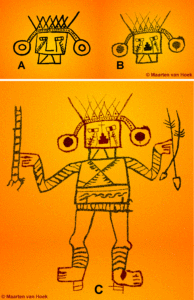
Figure 2A: Detail of the head of the Lord petroglyph according to Chumpitaz Llerena and Rodriguez Cerrón (2014), digitally enhanced by the author.
2B: Detail of the head of the Lord petroglyph, Chillihuay, southern Peru.
Drawing © by Maarten van Hoek, based on several photographs from the private
photographic collection of Rainer Hostnig (2008).
2C: The Lord petroglyph, Chillihuay, southern Peru. Drawing © by Maarten van Hoek,
based on several photographs from the private photographic collection
of Rainer Hostnig (2008). However, any inaccuracy is still my responsibility.
Confronting the Drawings … Again! (Peru)
Maarten van Hoek – rockart @home.nl
Introduction
With great interest I have watched the YouTube Video called: Charla Rupestre: Los Petroglifos de Chillihuay. Arequipa, Perú by Maritza Rodríguez Cerrón and Daniel Chumpitaz Llerena (21 August 2020), two leading Peruvian archaeologists who have intensively surveyed the important rock art site of Chillihuay in southern Peru. They have also published two papers about the rock art of Chillihuay (2008 and 2014). For quite a substantial part their Charla Rupestre is a duplicate of their 2014-paper published in Rupestreweb. In their 2014-publication there are several drawings (superimposed upon rather faint photographs). However, a couple of those drawings in their 2014-paper drew my attention, as they proved to be incorrect. It is unacceptable for me that significant details of their drawings are incorrect and I argue that nobody should accept such mistakes.

Figure 3: Detail of the head of the Lord petroglyph, Chillihuay, southern Peru. Photograph © by Rainer Hostnig (2008).
Especially the stepped nose-element (which is essential, but missing in the drawings by Chumpitaz Llerena and Rodriguez Cerrón) is a typical element in Paracas figures. This detail (and others) point more to a Paracas origin than a Wari origin (for more information see Van Hoek 2014 in Rupestreweb).
About their Incorrect Drawings
In a response to the 2014-publication in Rupestreweb by Maritza Rodríguez Cerrón and Daniel Chumpitaz Llerena, I published a paper in Rupestreweb in which I questioned their observations regarding prominent anthropomorphic figures at Chillihuay, labelled by them as the Shaman, the Lord and the Warrior. Hence my paper was called: The shaman, the lord and the warrior: anthropomorphic petroglyphs at Chillihuay, Arequipa, Peru. It was announced to the public by Diego Martínez Celis, editor of Rupestreweb, in November 2014.
As there appeared to be several more authors who published incorrect drawings, I wrote a paper (in Spanish, thus any Peruvian would be able to read it), called: Sobre Dibujos de Arte Rupestre (Andino). Una Petición Para Sólo Publicar Dibujos Que Son Científicamente Sólidos, which was published in TRACCE Online Rock Art Bulletin in 2016. In this paper I confronted incorrect drawings by several authors, including (for the second time) the “Lord” drawing published by Maritza Rodríguez Cerrón and Daniel Chumpitaz Llerena (Van Hoek 2016: Fig. 10. My publication was announced in Rock Art Archives in October 2016 and again in September 2016 and again in February 2020 (and also in Rupestreweb Messages – unfortunately no longer available online). It seems therefore highly unlikely that Maritza Rodríguez Cerrón and Daniel Chumpitaz Llerena did not have knowledge of my comments on their incorrect drawings. Yet they never contacted me about my justifiable comments.
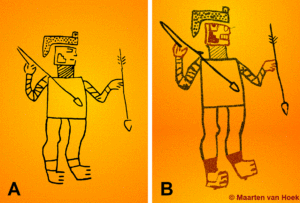
Figure 4A. Drawing of the (partially reconstructed) Warrior petroglyph at Chillihuay, southern Peru.
Drawing © by Maarten van Hoek, based on a photograph by Chumpitaz Llerena
and Rodriguez Cerrón (2014: unnumbered illustration).
3B: Drawing of the Warrior petroglyph at Chillihuay, southern Peru.
Drawing © by Maarten van Hoek, based on photographs from the private
photographic collection of Rainer Hostnig (2008).
However, any inaccuracy is still my responsibility.
Confronting their Drawings Again
To my big, unpleasant surprise the Charla Rupestre: Los Petroglifos de Chillihuay. Arequipa, Perú, held by Maritza Rodríguez Cerrón and Daniel Chumpitaz Llerena in August 2020 (online because of the Covid-19 restrictions) again featured the same incorrect drawings of the Shaman, the Lord and the Warrior (in the video visible at 40 minutes and at 1.02’.21”). It is obvious that Maritza Rodríguez Cerrón and Daniel Chumpitaz Llerena either never took the trouble to read my publications, or they read them, but they decided to ignore my publications completely. What they also ignore by ignoring published material, and hence their errors, is that consequently their interpretations will be incorrect and their publications unreliable. And yet, everybody who watched their online presentation will believe that they offered correct drawings and reliable information. Moreover, their information is not only unreliable, their information is also biased, as they do not link the Shaman to the Cupisnique Cultures, but only focus on Chavín imagery to explain their possible origin. By doing this, they also ignored my 2011-publication: The Chavín Controversy.
In this respect I am convinced that – also and especially in the academic world – it is mandatory that any sincere scientist should use all references, without excluding any relevant material. If Maritza Rodríguez Cerrón and Daniel Chumpitaz Llerena ignore my publications, and continue to publish their mistakes, then they are misleading their audience. I hope that by exposing their mistakes (for the third time!) they will change their graphical information.
Exposing mistakes seems to be “not done”. Therefore a whistleblower is often ignored, ridiculed or worse (ignoring someone for the wrong reason is the same as psychological murder: a child suffers most by being ignored by the parents!). In this respect I respectfully repeat what the respected and authoritative classicist Professor Mary Beard – Britain’s best-known classicist – once wrote in her book Confronting the Classics (2013: 284): “If the Latin (in this case a drawing) is all wrong, or the mythology and dates (in this case the Cupisnique-Chavín Controversy) are mixed up, then someone has to say so…”.
Finally, anyone who denies me the opportunity to do what Mary Beard strongly advocates (exposing errors), condones unacceptable ways to publish information. Anyone who starts to ignore me for that reason (and there are people who do so) must realise that without my comments errors will continue to be repeated. And is that what an academic encourages?
Thank you for your attention.
Only constructive comments in English or Dutch may be answered by me. Reactions in Spanish will be ignored by me.
*

Figure 5. Screen-dump of the interactive map available in Rupestreweb showing two papers about the rock art of Chillihuay available in Rupestreweb (RIP).
References / Referencias
Beard M. 2013. Confronting the Classics: Traditions, Adventures and Innovations. Profile Books, London.
Chumpitaz Llerena D., Rodríguez Cerrón M. 2014. Los Petroglifos de Chillihuay: La imagen antropomorfa (del formativo al perío o de integración Wari), Rupestreweb.
Rodríguez Cerrón M., Chumpitaz Llerena D. 2008. Los Petroglifos de Chillihuay: Aproximaciones a su interpretación. Paper presented at the III Simposio Nacional de Arte Rupestre, Huaraz, Perú.
Van Hoek, M. 2011. The Chavín Controversy – Rock Art from the Andean Formative Period. Oisterwijk, The Netherlands. Book PDF available at ResearchGate.
Van Hoek M. 2014. The shaman, the lord and the warrior: anthropomorphic petroglyphs at Chillihuay, Arequipa, Peru, Rupestreweb.
Van Hoek M. 2016. Sobre Dibujos de Arte Rupestre (Andino). Una Petición Para Sólo Publicar Dibujos Que Son Científicamente Sólidos, TRACCE On-line Rock Art Bulletin.
Van Hoek M. 2018. Formative Period Rock Art in Arequipa, Peru. An up-dated analysis of the rock art from Caravelí to Vítor, Oisterwijk, Holland, book available at ResearchGate.
*
Acknowledgement
As ever I am indebted to Rainer Hostnig, rock art researcher from Cusco, Peru, for sharing with me his valuable photographic collection of Chillihuay rock art, granting me permission to use and publish his photographs and for providing much additional information about Chillihuay.
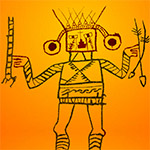
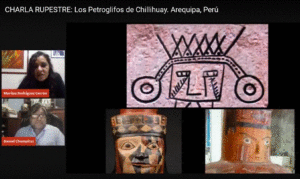
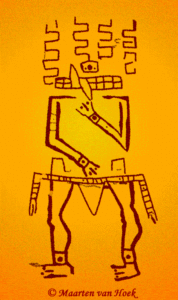
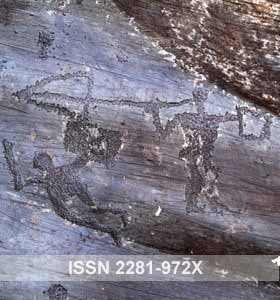













Leave a Reply